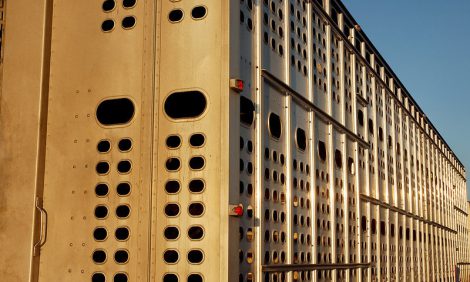



The importance of observation in cattle handling
Understanding cow behaviour and changing how you act around them can save you time, reduce stress, and make your farm a safer place to work. It can be a huge source of frustration when cows don’t easily move when and where you want them to.Globally respected animal behaviourist Professor Temple Grandin from Colorado State University shares her extensive knowledge about handling cattle and gives you some top tips that can be quickly adopted on farm.
Cows are sensitive to what they see and wary of anything they perceive as harmful. Head lifting, ears pinned back, defecating, tail twitching and white eye are all signs that they’re afraid of something. Once they’re frightened, it takes 20 to 30 minutes for them to calm down.
They’re aware of the little things that we don’t notice. Familiar items look safe from one angle but become an entirely new object when viewed from a different position. Younger, more inexperienced, animals are likely to react more.
A chain or piece of rope could be perceived as a snake. Shadows or sunlight shining on the ground will make cows hesitate and they can refuse to enter dark buildings. Making simple adjustments to allow more light into a building is one way to address these issues.
When cows are suspicious of standing water in a field, wait for the leader cow to look at the puddle and cross; the others will follow. The leader cow is usually a lone cow who needs to explore and has low fear. She’s not the same as the dominant animal at the feed trough, that are happy to let someone else lead the herd.
A heifer’s first experience of something must be made a positive one. Anything that causes her to associate an action with something negative will cause her to be reluctant to repeat that action. A yoke bumping her head or slipping over in the parlour are both avoidable with calm handling and rewards can be given to reinforce a positive outcome.
Prof. Grandin explains: “Give cattle time. If the leader cow has her head down, looking at something, wait until she lifts her head before you try to move them. You think you haven’t got time, well you also haven’t got time for them to turn back on you! Good handling requires more walking and takes more time.”
In her book ‘Behavioural Principles of Livestock Handling’ Prof. Grandin identifies four areas to reduce stress during handling:
- Non-slip flooring - Non-slip flooring is essential as animals get agitated when they slip and are fearful of it happening again. If lots of animals are slipping or falling, it’s most likely to be due slippery floors but could also be an indication of lameness issues. Simple solutions like adding sand to slippery surfaces or a rubber mat on the exit of a chute or crush can improve things hugely.
- No sudden or jerky motions - Yelling and screaming at cattle has intent and doesn’t work. Keep calm and don’t flap your arms. A US study showed electric prods caused more balking, falling, stumbling and vocalisation. These aids are tightly regulated in the UK but the principle is the same as we know that cattle that become agitated in the race have lower weight gains.
- Optimise pressure - Cows create a bubble or ‘flight zone’ around themselves that acts like a forcefield. If you stand within it, they’re going to get agitated or fearful so keep out until it’s time to move them. The size of the bubble will change depending on their age, breed and how much they’ve been handled before. Their flight zone still exists even if they are restricted to a race. Make sure you only encroach on this when you want the animal to move, otherwise stand at a comfortable distance.
- Block vision - Cattle races with open sides require greater stockmanship as cows will react to what they can see. Covering outer perimeter is strongly recommended. Curved races help because cows can’t see what’s coming and reduces their natural tendency to return to where they came from.
“Good stockmanship really pays, it doesn’t get enough credit,” says Prof. Grandin. “One big mistake people make is to stand at the head and poke them at the butt. You’re telling her to go forwards and backwards at the same time.
“If you want to get cattle moving along a race, stand at their head and walk towards their rear - the opposite direction you want them to move. The race should be long enough to encourage following behaviour.”
Cows should be stroked, not patted, so it feels like their mother’s tongue. Novelty is attractive when you give them time and room to approach new things. New experiences with people, equipment or vehicles needs to be positive as they will remember if it’s negative.
Just like dogs, reinforcing good behaviour is encouraged so make sure you feed cows in the parlour. One mistake people make is to put feed down when animals are pushing and shoving, which simply rewards that behaviour.
Farms should manage what they measure as it prevents bad from becoming normal. Handling, lameness, and body condition can all be assessed. Quality can be maintained by regular audits of your handling process using an objective numerical scoring system.
The steps to improve animal welfare include eliminating abuse and neglect, implement numerical scoring, accommodate behavioural needs and allowing them to express positive emotions. Ultimately, the biggest question we should all ask about welfare is ‘are we giving them a good life?’




